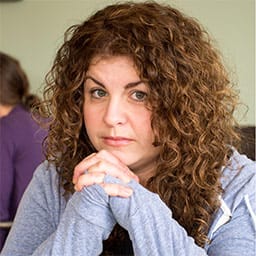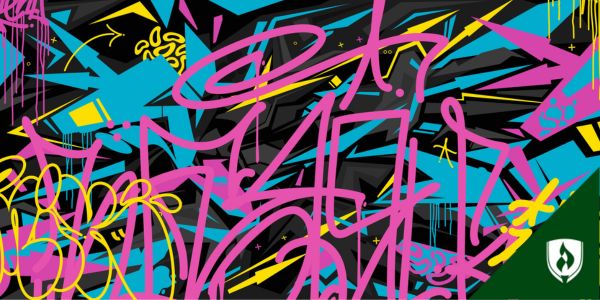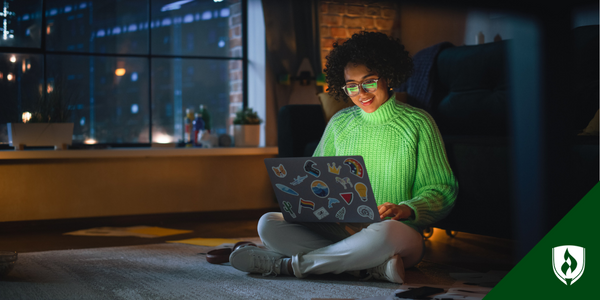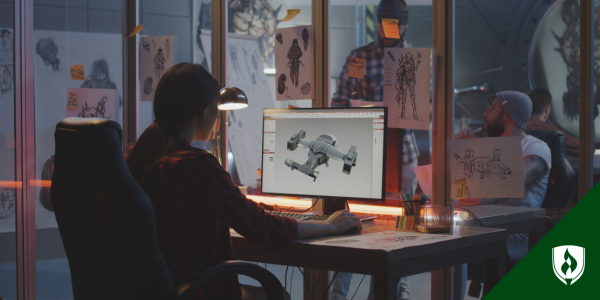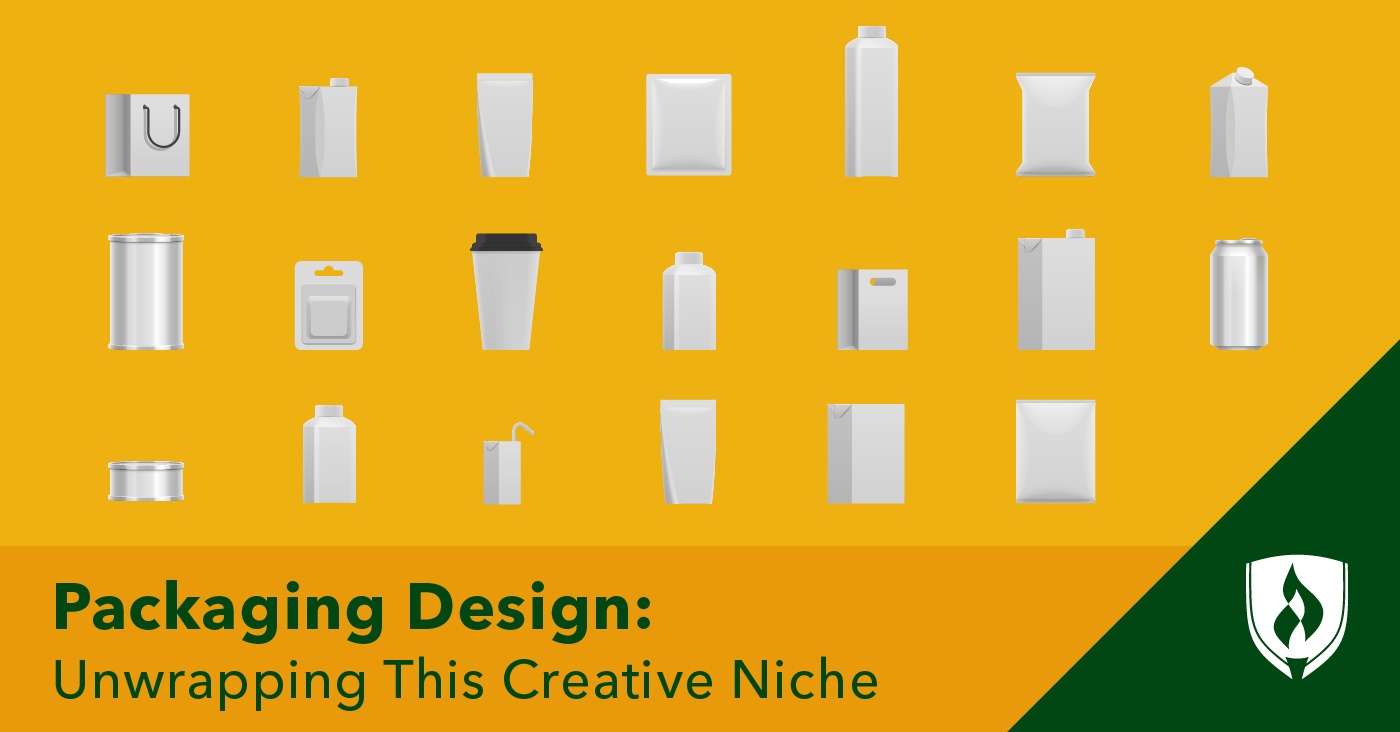
The bottle of juice you’re drinking. The box and case your new laptop and accessories came in. The bag of potato chips you’re eating. The look of these everyday items can be easy to tune out in our busy daily routines. But before all three of these examples—and countless others—came into your view, they were worked on intensely by creative professionals called packaging designers.
These out-of-the-box thinkers are (amusingly enough) tasked with making sure what’s on the box and the other forms of packaging we see every day looks aesthetically pleasing, highlights important features and reinforces a brand.
Ready to learn more about the potentially overlooked world of packaging design? Read on to hear more about this creative specialty from experienced packaging design professionals.
What is packaging design?
A subset of graphic design, packaging design is another way for a company to differentiate their products from competitors while reinforcing the brand and value of the item. Instead of billboards, digital ads or brochures, their “canvas” includes boxes, labels, bags and practically anything else a product can be packaged in.
“Graphic design is part of it—what is the brand, the logo, the color, the personality of the package,” says Jim Jackson, a packaging designer with over 15 years of experience in the field.
Packaging design brings in all the basic principles of graphic design, with the goal of creating an attractive and intriguing product that customers are curious to pick up, examine and, ultimately, purchase.
“I would describe it as the design and production of product packaging that is visually appealing while also being informative and easily approachable,” explains Zachary Rupert, a packaging designer with Sheetz®.
Jackson loves the fact that he can go to a store and see his work on the shelf. He also takes pride in seeing the impact of his design on a product’s success.
“You can design something that can help a product sell better, be better, be more successful,” Jackson says. “Simply because of the packaging.”
What do packaging designers do?
Entering into a packaging designer’s work environment offers a lot of clues about the job as well. Dan Vonder Haar, a packaging designer for CBX, describes his workspace as “a 30-inch monitor, as much screen as I can, and package samples scattered through my desk.”
There are also conference rooms with big white boards full of sketches and designs, as well as digital white boards where colleagues can view, collaborate and critique projects. The job involves concept work in a variety of dimensions, some hands-on, some digital, with one essential goal: to produce the optimal version of a product’s packaging in order to increase the product’s sales.
Some packaging designers work in-house with a company, where they’re at times tasked with both keeping a product present and visible for loyal customers as well as presenting new products as they enter the markets. Other packaging designers work for creative agencies that can specialize in brand development and new product launch.
“Sometimes you are working within a certain brand’s guideline that you must maintain,” says Rupert. “Sometimes you are working on developing a brand-new direction for the packaging.”
Packaging design example: Breaking down a box of granola bars
As you can probably guess, the tactile nature of packaging design comes with some unique challenges that many graphic designers wouldn’t normally contend with—instead of creating something that looks good that fits into a flat rectangle, you need to think in multiple dimensions and be aware of potential layout constraints.
Jackson, who’s designed packaging for many food products commonly found in grocery stores, offers the example of what goes into designing new packaging for granola bars. First the company comes to him with the product, explaining what they’ll need.
“They give you the size, explain it needs to go into a plastic envelope, and then into a bigger box,” he says.
Jackson then must design the box to fit the quantity of granola bars indicated, and to include a flap and a folding mechanism for reclosing the box.
“You have to have space for a bar code, ingredients, the brand statement describing the product,” Jackson says. “Legal size and weight measurements, the address of the company.”
The placement of all this information is critical. For instance, if a bar code isn’t in the proper location, the cash register won’t be able to read it.
Once all those necessities are accounted for, then Jackson must consider the weight and type of cardboard material, the colors and printing techniques and the kinds of visuals that’ll cause loyal customers to recognize the product or new customers to investigate.
Successful creative packaging design: A blend of the recognizable and the new
Redesigning a product’s look is not always a matter of reimagining a logo or updating the colors and look. Jackson recalls refreshing the look of an existing cereal product that the company had decided was outdated, only to find that sales dropped once it was launched.
“When it landed on the shelf, it looked great,” Jackson remembers. “But sales actually dropped. When they investigated by talking to customers, they said they couldn’t find it on the shelf. So, we failed, because those customers didn’t recognize their brand. It didn’t matter to them if the brand was tired or not contemporary.”
The company immediately went back to the old packaging, Jackson says.
“The cost of the new look wasn’t worth it to them,” he says.
This illustrates one of the challenges of working in this field. New products need effective, memorable branding and packaging to stick in consumers’ minds. But that stickiness can also make updates a balancing act between familiarity and branching out into something new.
Finding creative packaging inspiration
Everywhere you look offers opportunities to see examples of packaging design.
“I tend to start my research and inspiration process within whatever packaging realm I may be designing for at the time,” says Rupert. “I start with what’s new and trendy, then dive into vintage packaging to see how things have evolved, and why they evolved.”
Jackson likes to go directly out in the field to see what’s happening in the retail space.
“I go shopping,” he says. “My wife refuses to go shopping with me because I take too long. I’m stuck in an aisle and looking at the box and turning it over and upside down.”
Jackson also keeps inspiration he sees online on Pinterest® boards and checks design blogs. Vonder Haar recommends The Dieline as an excellent site for packaging designers and those who hope to break into the field.
Rupert also says that other forms of design can inspire him, even if they’re not related to his current projects.
“A great source of inspiration for me is watching films and television shows,” says Rupert. “You tend to see some very interesting set and production design,” Rupert says.
What makes packaging design different from other kinds of design?
“What makes it unique is developing the skills of designing something in a flat environment but knowing it will be seen in a product with depth and dimension,” says Rupert. He offers the example of a soda can compared to a poster ad for the soda.
“With the poster design, you know it will always be displayed flat and easy to see all at once, whereas the actual can design you have to account for how it stretches and folds over the can, and that visually you will only be able to see a third of the design at once,” Rupert explains.
“Packaging is very reliant on printing, which has a lot of different variables,” says Vonder Haar. There are differences in how printing works on cartons compared to a metal can or a label on a plastic bottle.
There is also a context to consider when designing packaging, especially knowing where it will be sold. As most retail spaces feature fluorescent lighting, Vonder Haar cites the difficulty of using any material with a glossy surface, which can be tricky to see quickly under fluorescents.
Packaging designers only have a few moments of a potential buyer’s attention. “If you can’t quickly convey what the product is, then you’ve failed to successfully design it,” Vonder Haar explains.
“You also must consider context,” Vonder Haar adds. “How your product will look among the other products of its type.”
Unlike print or digital design, the physical ability to interact with a product is a big draw, another way to market and drive sales for a company.
“The package has to stand out and connect with me in a split second,” explains Jackson. “It has to make me want to pick it up, out of curiosity, or an emotional trigger. I should want to touch it. If a package doesn’t create an emotional connection, then it’s going to sit on the shelf.”
The environmental impact of packaging design
Vonder Haar says one of the big concerns in packaging design is the volume of waste involved, which many people are coming to see as a detriment to purchasing a product.
Toy packaging in particular is a difficult area.
“Parents don’t like how hard it is to cut through all the plastic and zip ties,” Vonder Haar explains. But much of this packaging is key in presenting the toy on the shelf.
There is growing demand for packaging that is less wasteful or involves environmentally friendly materials, as well as items that don’t have excessive weight or unusual bulk.
“Shipping’s a whole thing, in terms of environmental concerns,” Jackson says. “There are whole industries and associations fighting against excessive packaging.”
Sometimes the packaging itself offers features for the consumer. Vonder Haar cites work he did for a bar of soap where the packaging was made of recyclable material that had seeds embedded into it so you could literally plant it into the ground instead of throwing it in the trash.
While creative solutions may often be outside of a packaging designer’s control, this is a good example of how environmentally conscious consumers may shape the future of the field.
Becoming a packaging designer
Packaging design is also a niche of graphic design that has staying power.
“There’s no shortage of packaging,” explains Jackson. “Packaging is not going away. There’s always going to be stuff. Electronics. Food. Toys. Nail polish. It’s a healthy industry.”
So where do you start if you’d like to pursue a career in packaging design? Packaging designers tend to have Graphic Design education, generally at the Bachelor’s degree level. Like with other graphic design focus areas, mastering tools like Adobe Illustrator® and Photoshop® will go a long way, but you’ll also need a solid foundation of design theory to use those tools well.
The tactile elements aspects of packaging design can make this a challenging design niche to build a portfolio for. You can still create mock-ups and digital examples, but knowing how to navigate some of the materials-related challenges presents a learning curve that may not be easy to overcome without practical experience. Would-be packaging designers should do what they can to seek out small scale projects and opportunities to get their feet wet.
What’s your next step?
Thinking you’d like a career where your work could potentially show up on retail shelves everywhere? Becoming a graphic designer could be the perfect move for you. If you’d like to learn more about this potential career path, check out our article, “Should I Be a Graphic Designer? 6 Questions to Help You Find Your Answer.”
Sheetz is a registered trademark of Sheetz, Inc.
Adobe Photoshop and Illustrator are registered trademarks of Adobe Software, Inc.
Pinterest is a registered trademark of Pinterest, Inc.
